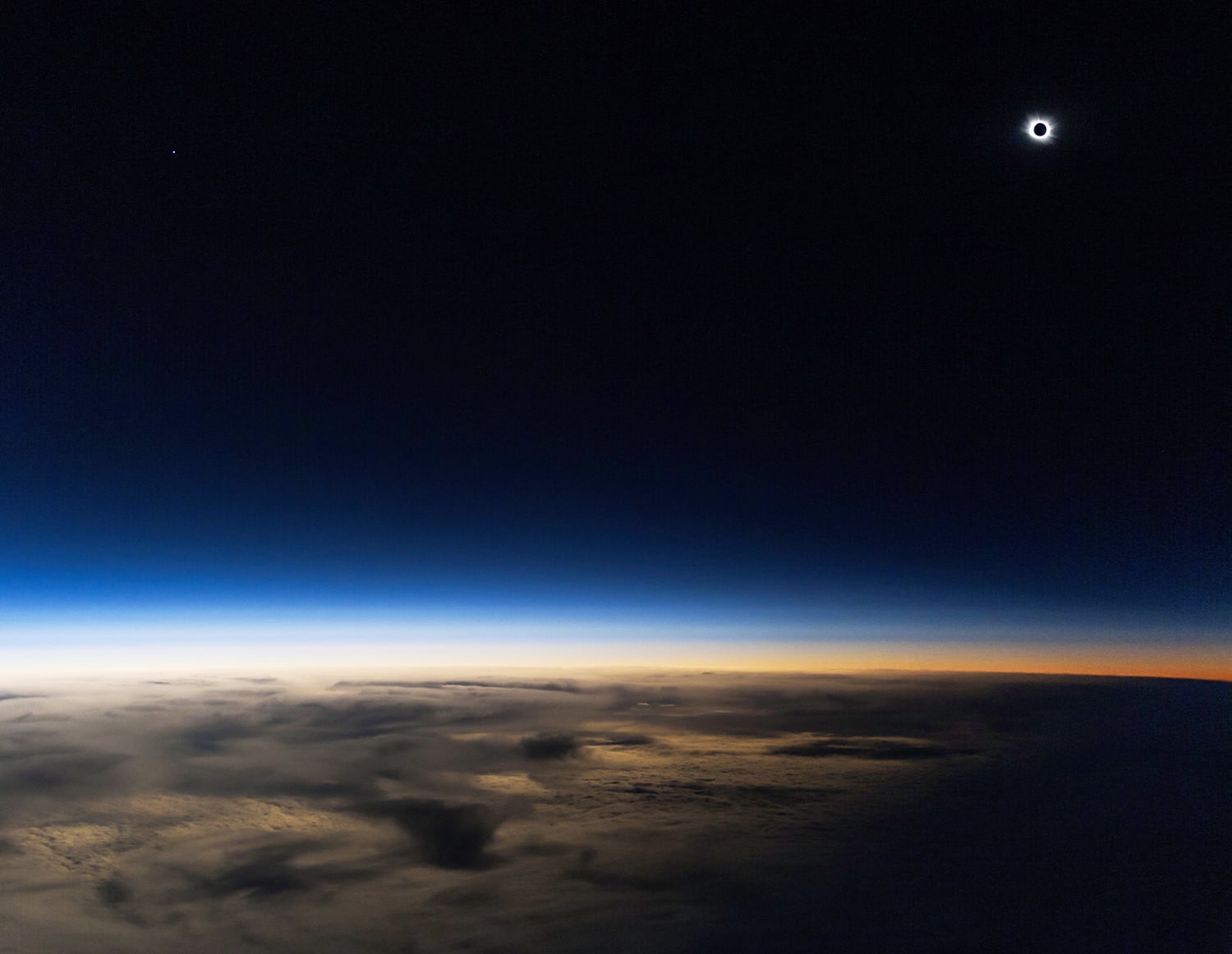What does a solar eclipse look like from a fast-flying Falcon 7X jet at 14,000 meters (48,000 feet)? French journalist Guillaume Cannat described the Sun as looking black and "ruffled."
Cannat was part of a group accompanying professional and amateur astronomers on board three Dassault Falcon 7X executive jets that flew in the narrow zone where totality of the eclipse could be observed, from southern Greenland to the geographic North Pole. Traveling through the stratosphere provided the unique opportunity to watch the total eclipse without atmospheric turbulence -- which improved the view and the ride. And flying at speeds near Mach .9 also "lengthened" the view of the eclipse to over a minute.
Cannat described the view of totality:
"The crown was deployed around the black disc of the New Moon . It looks like a disheveled silver hair and matted by the solar wind. Far to the left, the planet Venus throws diamond chips, but the absorption of the window hides other celestial body that must always shine in the night daylight. Twilight slides around, bathing the distant clouds in a soft orange glow."
Here's a composite of several images of the eclipse that Cannat put together:
[caption id="attachment_119557" align="aligncenter" width="580"]
A montage of photos from the March 20, 2015 solar eclipse, captured at 14,000 meters from a jet. Credit and copyright: Guillaume Cannat.[/caption]
The flight was organized by French amateur astronomer Xavier Jubier who created the software
Solar Eclipse Maestro
. The jets were filled with observation equipment:
#Falcon7X 's advanced pressurization system gives #eclipse2015 chasers the feeling they're barely over the tree tops.. pic.twitter.com/DmfL2HZK4M — Dassault Falcon (@DassaultFalcon)
Cannat also filmed the eclipse in real time with a GoPro Hero 4. "The whole sequence is rendered in real time so you can relive all in live conditions," Cannat said. "Note, left, the presence of the bright spot of the planet Venus. The visible light rays around the sun before and after the totality phase are reflections on the window; there are also occasional reflections from inside the cabin. I left her to fully convey the mood of the scene. Naturally, I urge you to watch this video in HD 1080p to capture more detail and better see the spectacular growth of the shadow on cloud strata."
And here's a video of the adventure from Dassault Falcon:
Read Cannat's full account (in French) and see more images at two posts at Le Monde
here
and
here.
Our thanks to Guillaume Cannat for sharing his images with Universe Today.
 Universe Today
Universe Today
